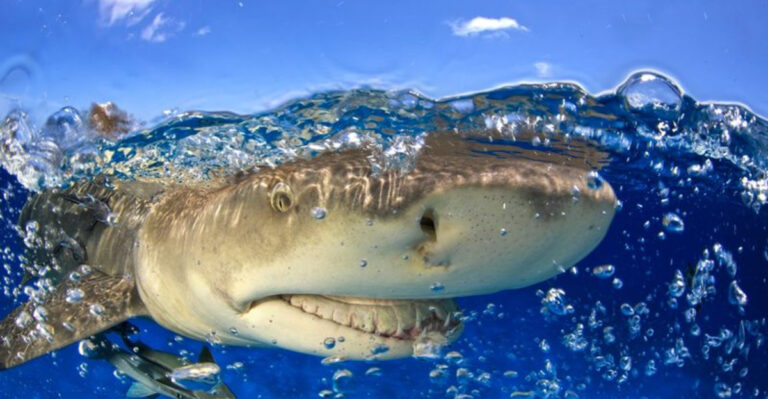14 National Parks Where Grizzly Bears Are Most Commonly Found

Ever wondered where you might spot a massive grizzly bear in the wild? These magnificent creatures, with their distinctive shoulder humps and impressive size, roam across several protected wilderness areas in North America.
While seeing these powerful animals can be thrilling, understanding where they live helps both with wildlife viewing opportunities and staying safe in bear country.
1. Yellowstone National Park: The Grizzly Kingdom
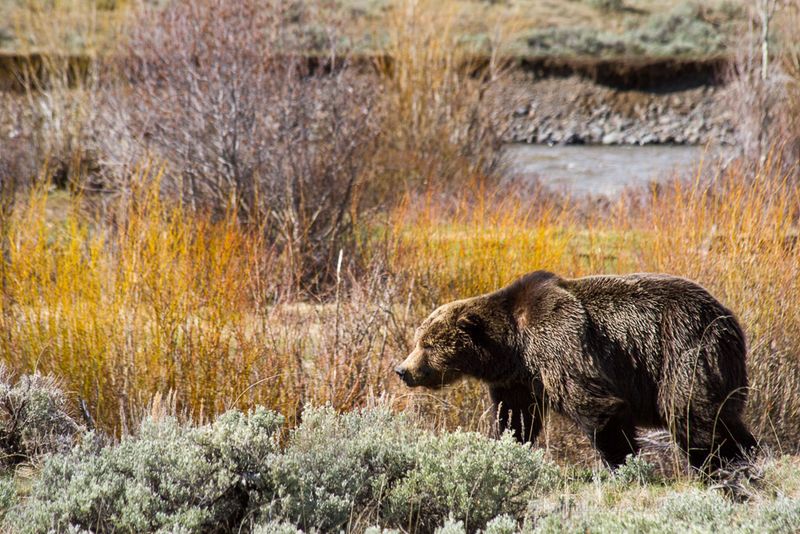
Home to roughly 700 grizzlies, Yellowstone offers some of the best bear-watching opportunities in the lower 48 states. The Lamar and Hayden valleys become hotspots in spring when bears emerge from hibernation and feast on newborn elk calves.
Dawn and dusk provide optimal viewing times, but always keep your distance and carry bear spray!
2. Grand Teton National Park: Mountain Majesty Meets Bears
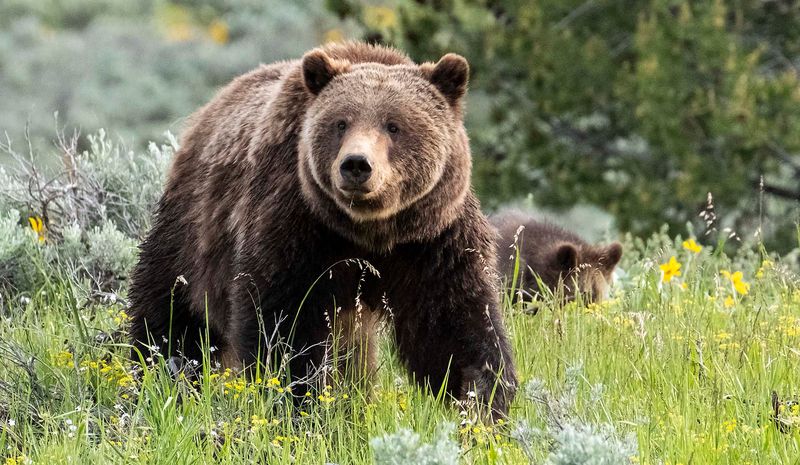
Just south of Yellowstone, Grand Teton shares the same grizzly population. These magnificent mountains provide crucial habitat where bears feast on berries, roots, and occasionally elk.
Willow Flats and Oxbow Bend offer decent chances for spotting these massive creatures. Rangers often set up spotting scopes when bears are visible in safe viewing areas.
3. Glacier National Park: Grizzly Central

Nicknamed the “Crown of the Continent,” Glacier harbors one of the densest grizzly populations in the lower 48. The Many Glacier and Logan Pass areas frequently reward patient observers with bear sightings.
Huckleberry season (late summer) turns these normally solitary animals into berry-picking machines, offering excellent viewing opportunities from safe distances.
4. Denali National Park: Alaska’s Bear Wilderness
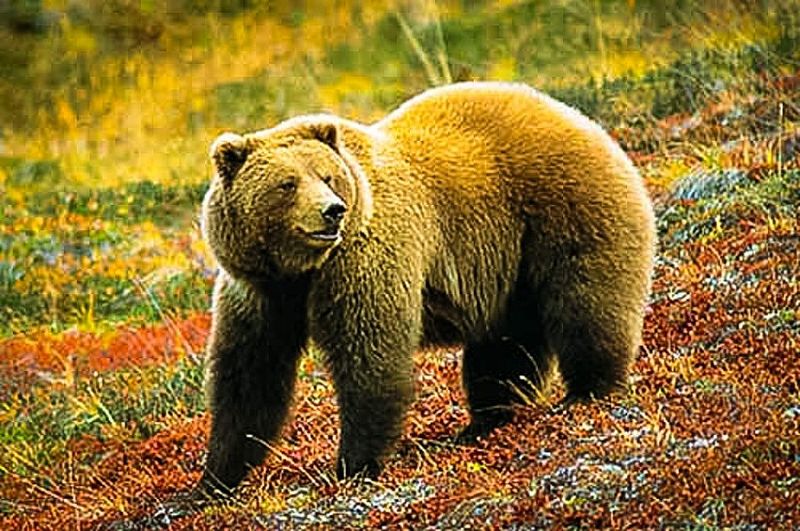
Sprawling across six million acres, Denali provides prime habitat for Alaska’s interior grizzlies (also called brown bears). Unlike their coastal cousins, these bears are slightly smaller but no less impressive.
The park’s restricted road system means bears remain relatively undisturbed. Park buses offer the safest viewing platform while protecting both visitors and wildlife.
5. Katmai National Park: Salmon-Catching Spectacles

Famous for Brooks Falls, where bears stand atop waterfalls snatching leaping salmon mid-air. While technically coastal brown bears (same species as grizzlies), Katmai’s bears grow enormous thanks to their protein-rich diet.
July through September offers incredible viewing opportunities. The park’s bear cams let you witness this natural spectacle from anywhere in the world.
6. Lake Clark National Park: Hidden Bear Paradise
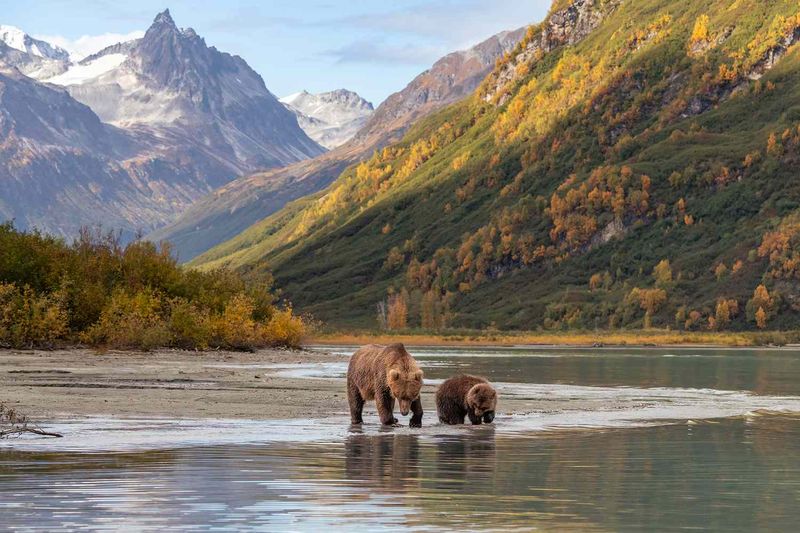
Less famous than Katmai but equally impressive, Lake Clark offers intimate bear viewing without the crowds. Coastal sedge meadows attract dozens of bears each spring and summer.
Cubs playfully wrestle while mothers graze nearby, creating magical wildlife moments. The park’s remote location means accessing it requires a floatplane, keeping visitor numbers low.
7. Wrangell-St. Elias: America’s Largest Bear Playground
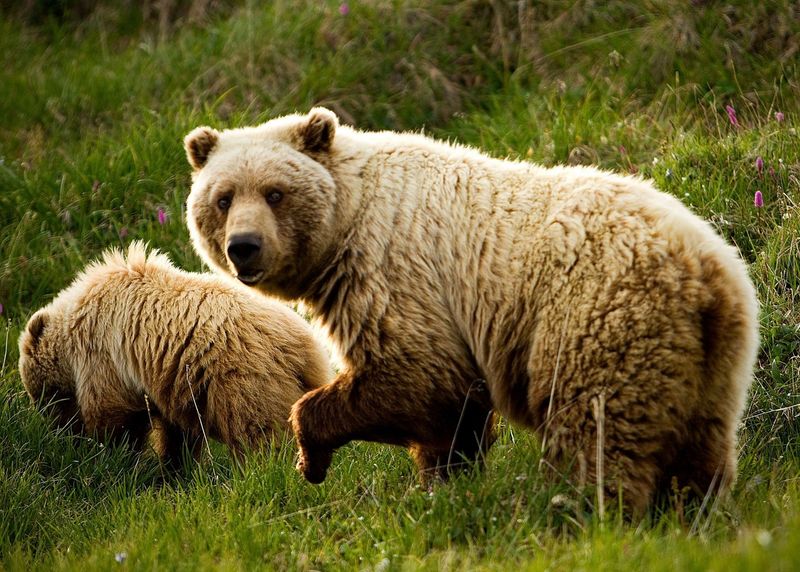
Stretching across 13.2 million acres, this massive park houses both black and grizzly bears across diverse ecosystems. Berry-rich alpine areas become bear magnets in late summer.
The park’s immense size means bears here have minimal human contact. Backcountry hikers must take extra precautions in this truly wild landscape where bears reign supreme.
8. Gates Of The Arctic: True Wilderness Experience

America’s northernmost national park offers no roads, trails, or facilities – just pure wilderness where grizzlies roam freely. These Arctic grizzlies follow caribou migrations and feast on berries during short summers.
Few visitors ever witness these bears in person. The park’s remoteness requires bush planes and serious wilderness skills, making it one of the least visited but most pristine bear habitats.
9. Grand Canyon Of The Yellowstone: Riverside Bear Hotspot
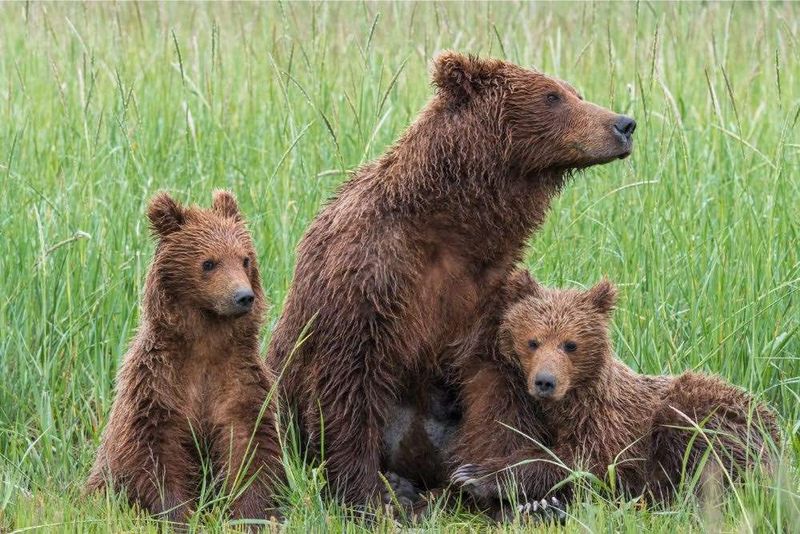
Within Yellowstone, this specific area deserves special mention. The canyon’s steep walls funnel wildlife movement, creating natural corridors where bears frequently travel.
Early morning visitors sometimes spot grizzlies fishing for cutthroat trout in crystal-clear waters. The contrast of massive bears against the canyon’s colorful rhyolite walls creates unforgettable scenes.
10. North Cascades National Park: Recovery Zone
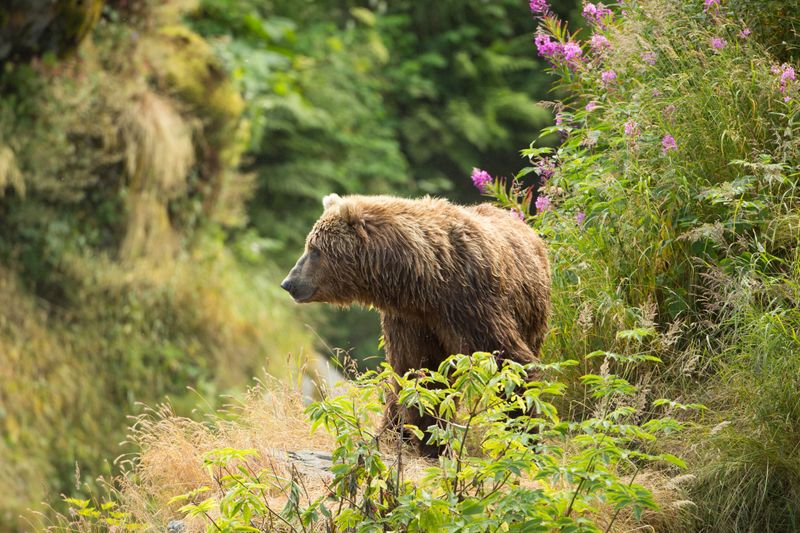
While grizzly sightings remain extremely rare here, this rugged wilderness represents crucial recovery habitat for the species. Recent evidence suggests a few bears may still roam these remote mountains.
Conservation efforts aim to restore a viable population to this ecosystem. The park’s challenging terrain and limited access have preserved potential habitat for these magnificent animals to someday thrive again.
11. Olympic National Park: Historical Bear Territory
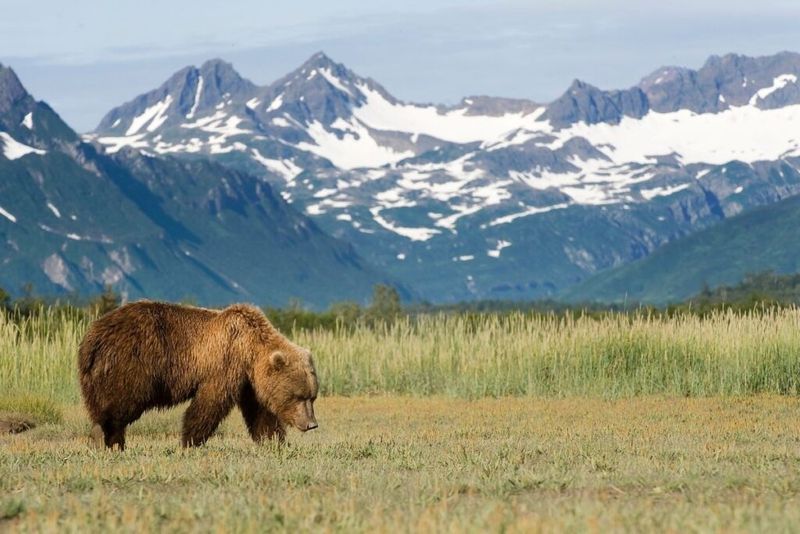
Though grizzlies no longer inhabit this diverse park, historical records indicate they once roamed these mountains and coastlines. The park’s remote Enchanted Valley represents what was once prime grizzly habitat.
Today, black bears thrive here instead. Conservation biologists debate whether grizzlies could someday be reintroduced to restore this ecosystem’s historical predator balance.
12. Banff National Park: Canada’s Bear Sanctuary
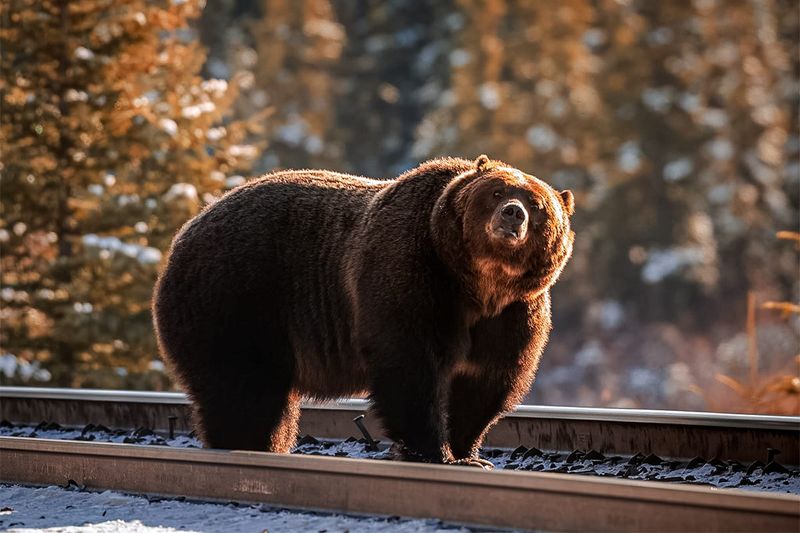
Just north of the US border, Banff protects one of Canada’s most important grizzly populations. The Bow Valley Parkway offers excellent viewing opportunities, especially in spring when bears graze on fresh vegetation.
Railway tracks unfortunately claim bear lives each year. Park managers have implemented innovative solutions like warning systems and alternative food sources to reduce these tragic collisions.
13. Jasper National Park: Wilderness Corridor

Connected to Banff, Jasper forms part of a crucial wildlife corridor allowing bears to move between protected areas. The Maligne Valley and Wilcox Pass frequently host grizzlies digging for ground squirrels and alpine plants.
Park managers carefully monitor human-bear interactions. Special wildlife viewing areas with elevated platforms allow safe observation without disturbing these magnificent animals.
14. Kluane National Park: Yukon’s Bear Haven
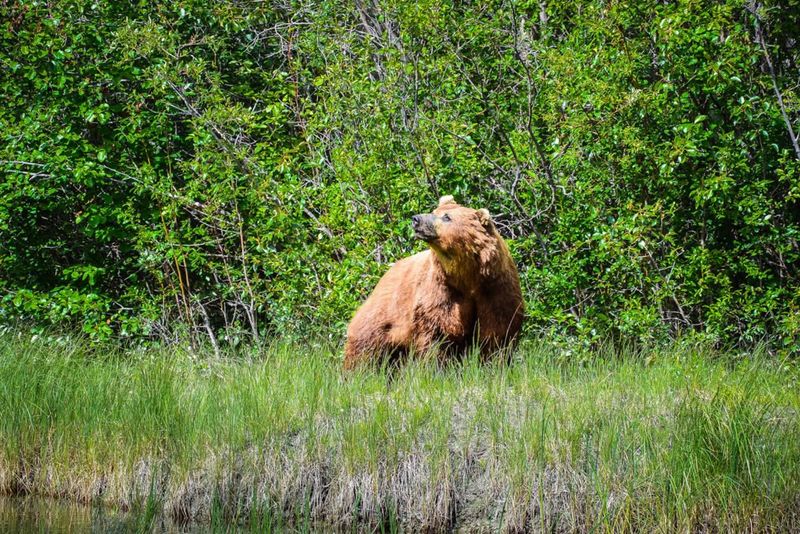
Sharing a border with Alaska’s Wrangell-St. Elias, this Canadian park protects massive ice fields and valleys where grizzlies thrive. The Alsek River corridor concentrates bear activity, especially during salmon runs.
Some of North America’s largest grizzlies inhabit these remote valleys. The park’s international protection status ensures these bears can roam freely across borders, maintaining genetic diversity across populations.

